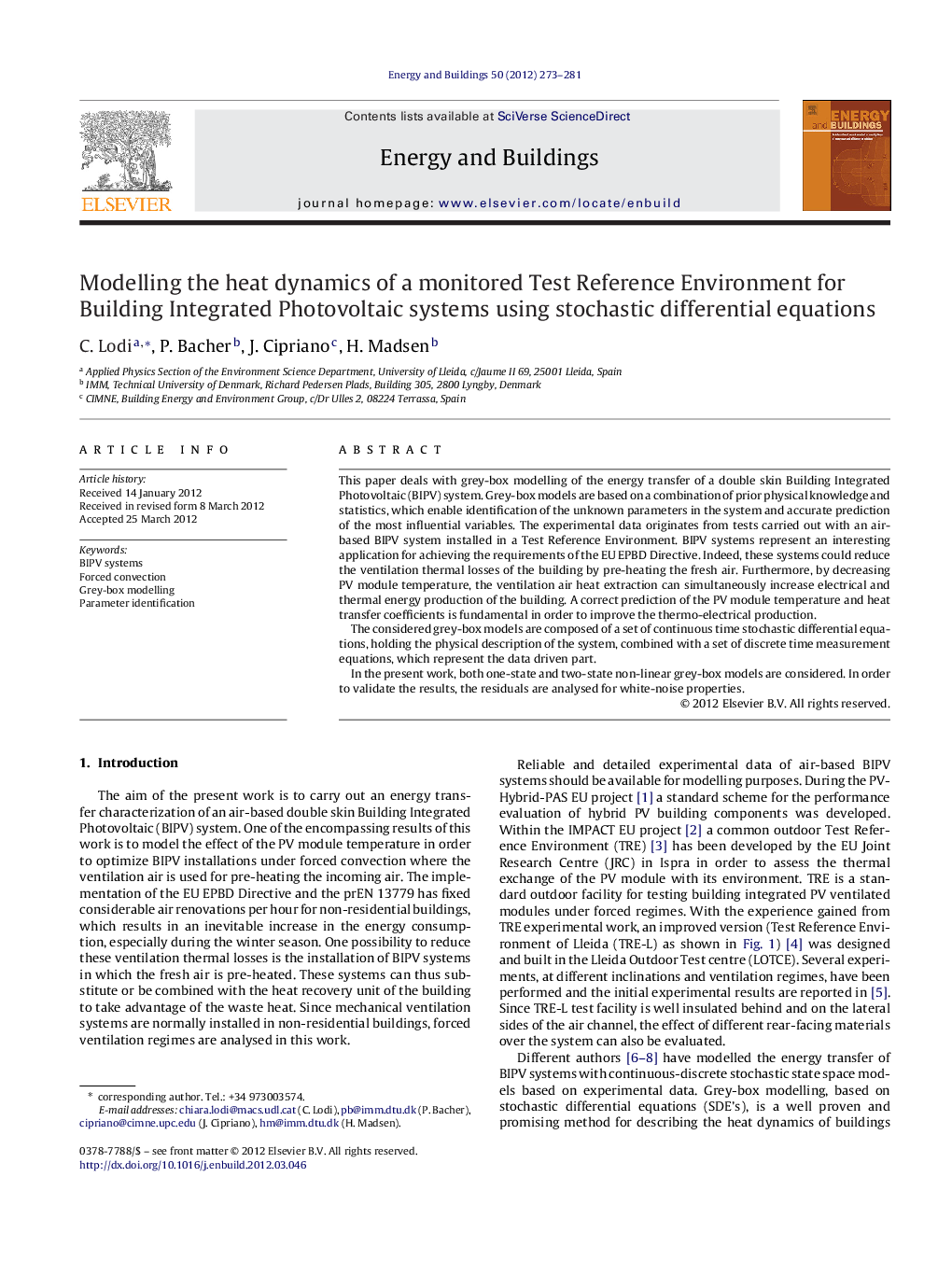| Article ID | Journal | Published Year | Pages | File Type |
|---|---|---|---|---|
| 263771 | Energy and Buildings | 2012 | 9 Pages |
This paper deals with grey-box modelling of the energy transfer of a double skin Building Integrated Photovoltaic (BIPV) system. Grey-box models are based on a combination of prior physical knowledge and statistics, which enable identification of the unknown parameters in the system and accurate prediction of the most influential variables. The experimental data originates from tests carried out with an air-based BIPV system installed in a Test Reference Environment. BIPV systems represent an interesting application for achieving the requirements of the EU EPBD Directive. Indeed, these systems could reduce the ventilation thermal losses of the building by pre-heating the fresh air. Furthermore, by decreasing PV module temperature, the ventilation air heat extraction can simultaneously increase electrical and thermal energy production of the building. A correct prediction of the PV module temperature and heat transfer coefficients is fundamental in order to improve the thermo-electrical production.The considered grey-box models are composed of a set of continuous time stochastic differential equations, holding the physical description of the system, combined with a set of discrete time measurement equations, which represent the data driven part.In the present work, both one-state and two-state non-linear grey-box models are considered. In order to validate the results, the residuals are analysed for white-noise properties.
► The paper presents grey-box models for the heat dynamics of an air-based BIPV system. ► Several forced regimes and different PV module inclinations are analysed. ► The convective heat transfer coefficients and the PV module heat capacity are estimated. ► It is shown that a two-state model is needed for a proper description of the dynamics.
